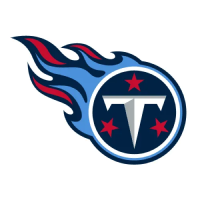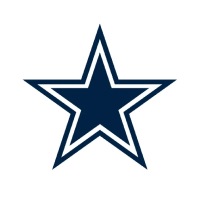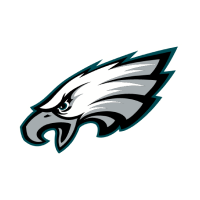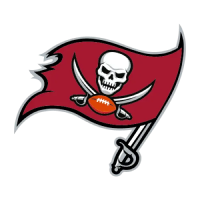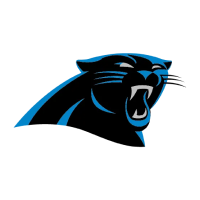Welcome to an exciting QB Summer School today with Liberty quarterback Malik Willis, perhaps the hottest name on the quarterback carousel this summer. An oft-forgotten 4-star transfer from Auburn, Willis exploded into relevancy as he carried Hugh Freeze’s Liberty Flames to a top-15 ranking and a Cure Bowl win over fellow mid-level darling in Coastal Carolina. With tons of offseason hype approaching his upcoming season, Willis has Heisman odds around big-name passers for 2021 contenders like Emory Jones, Brock Purdy, and Desmond Ridder. People are taking him seriously.
But how seriously will the NFL take him? A passer in the budding dual-threat mold, Willis is all excitement right now—but the substance of his down-to-down game demands improvement if he’s to enter the top of the quarterback conversation.
Malik Willis’ Summer School: Accuracy
This is kinda a lame one, but it is an important one. Willis must become a more accurate passer.
Every quarterback has balls that he throws better than others. Willis has a live arm and can throw a nine pattern fairly well—but other than that, it’s really tough to find what he hangs his hat on right now. Because his mechanics tend to be scattershot, Willis often looks like a player guiding the ball into windows instead of trusting his throwing process. His misses are fairly often and fairly egregious, which creates interceptable passes or massive missed open completions.
Take this pick late in a one-score game against NC State. This was essentially a game-losing interception for an undefeated Liberty squad going up against a ranked NC State team, and while Liberty still had a tremendous season under Willis, I’m sure he’d want this one back.
https://youtu.be/s8ElnD-pF20
This is a far hash, out-breaking throw, which is a tough ask for any college quarterback. Willis, however, clearly has NFL arm talent and is able to drive this throw the distance. Despite that, he still crow hops toward the far sideline to shorten the throw. The problem is that this takes time, and the time that it takes narrows the throwing window and gives the defensive back time to close on the throw. If Willis wants to shorten this throw, he has to be a lot speedier in his drop back.
And on top of that, Willis fades away from this throw a bit in the face of upcoming pressure, despite the distance between him and the rusher. In that this is a throw that requires high velocity and a strong delivery, fading away pulls the ball downfield and takes some velocity off of it, giving the defensive back even more time to close.
These are fundamental building blocks of making a far-hash throw, and while Willis has the arm strength to get it done, no amount of velocity would help solve a lazy dropback and unnecessarily adjusted throwing platform. This is where bad throwing mechanics can take tough, but makeable throws and make them nigh on impossible.
Now, this is a tough throw. There are easier ones that Willis gets lazy on and lets get away from him, and those are more predicated on the nuts and bolts of the throwing motion. Willis relies on his arm too much, often minimizing the rotation of his hips by leaving his back foot behind his motion or by opening his hips to his target altogether. That tendency creates room for his upper body to tilt and his arm to slash across his body, which exacerbates any issues with the timing and angle of his release. Again against NC State, this time with good drop timing and a wide-open window, Willis just sails this ball long as his upper body does most of the work/rotation while his hips just follow along behind his arm.
https://youtu.be/LTg_S62WvfA
There’s just no need for this throw to be difficult, but Willis makes it so by just feeling out the throw instead of sticking to a clean rhythm and process. Fixing accuracy is one of the biggest challenges of quarterback development, but it’s the one that faces Willis this season.
Can this be fixed?
So, yes and no. Yes, easy mechanical improvements can be had over a summer. Willis spent much of the offseason working with quarterback coach Quincy Avery, who has worked with such passers as Deshaun Watson, Trey Lance, and Justin Fields in recent years. Lance is an important name to circle as he had a lot of easy mechanical issues in his release during his one season at North Dakota State, and off of the pro day work we’ve seen since then, Avery helped him in that regard. Willis, another top athlete who is more of a natural thrower than a clearly practiced and polished quarterback, fits that same mold as Lance was in.
There is a no here though, and it is considered with muscle memory and consistency. Remember, it took multiple seasons in the pros for Josh Allen to take to specific quarterback coaching and improve his mechanics to the point where his accuracy reached NFL levels last season—and we still don’t know the degree to which that’ll stick. It is very hard to unlearn habits and Willis has some bad habits as a passer that will be tough to unravel, no matter his work ethic or the quality of his positional coaching.
The good news is that Willis—like Allen, Lance, and Lamar Jackson—simply doesn’t need to be an elite quarterback in terms of accuracy. He’s such a dangerous runner that even passable NFL accuracy makes him a starting-caliber player in the league. He is right now much of what Jalen Hurts was coming out of Oklahoma: a dangerous runner, an improving but still not necessarily average passer, and a potential starter for his work ethic and developmental arc. Willis has another year to launch himself beyond that mid-Round 2 draft slot Hurts achieved and into the first round.
Filed In
Related Articles
NFL Draft
Arik Gilbert Doesn’t Need Big Workload To Be A Top NFL Draft Pick
- Aug 22, 2022
NFL Draft
2023 NFL Mock Draft: Marino 1.0
- Aug 22, 2022
Written By









